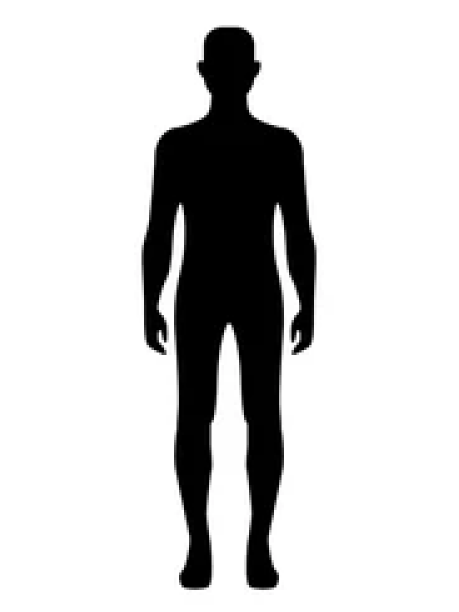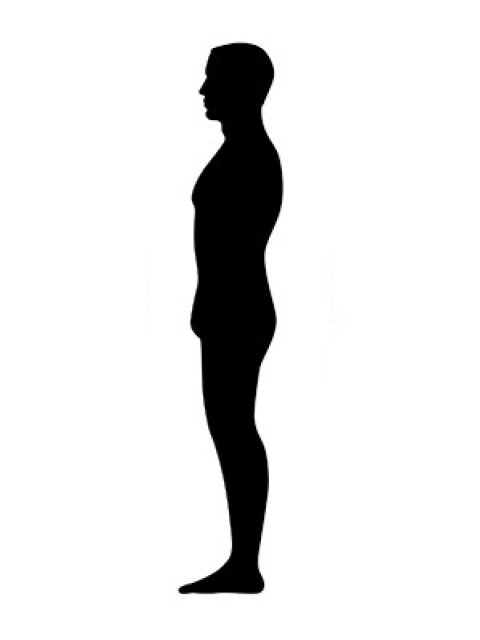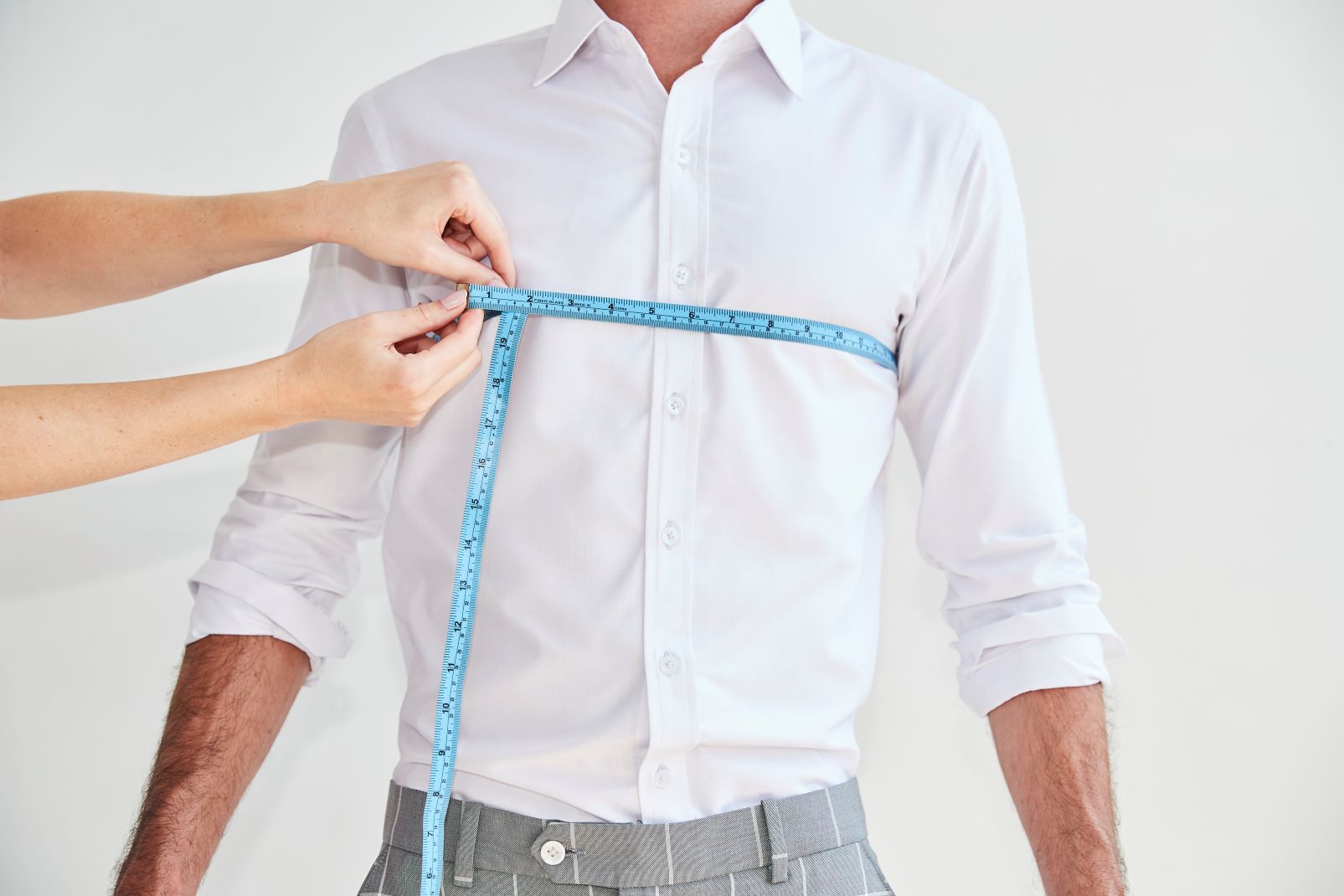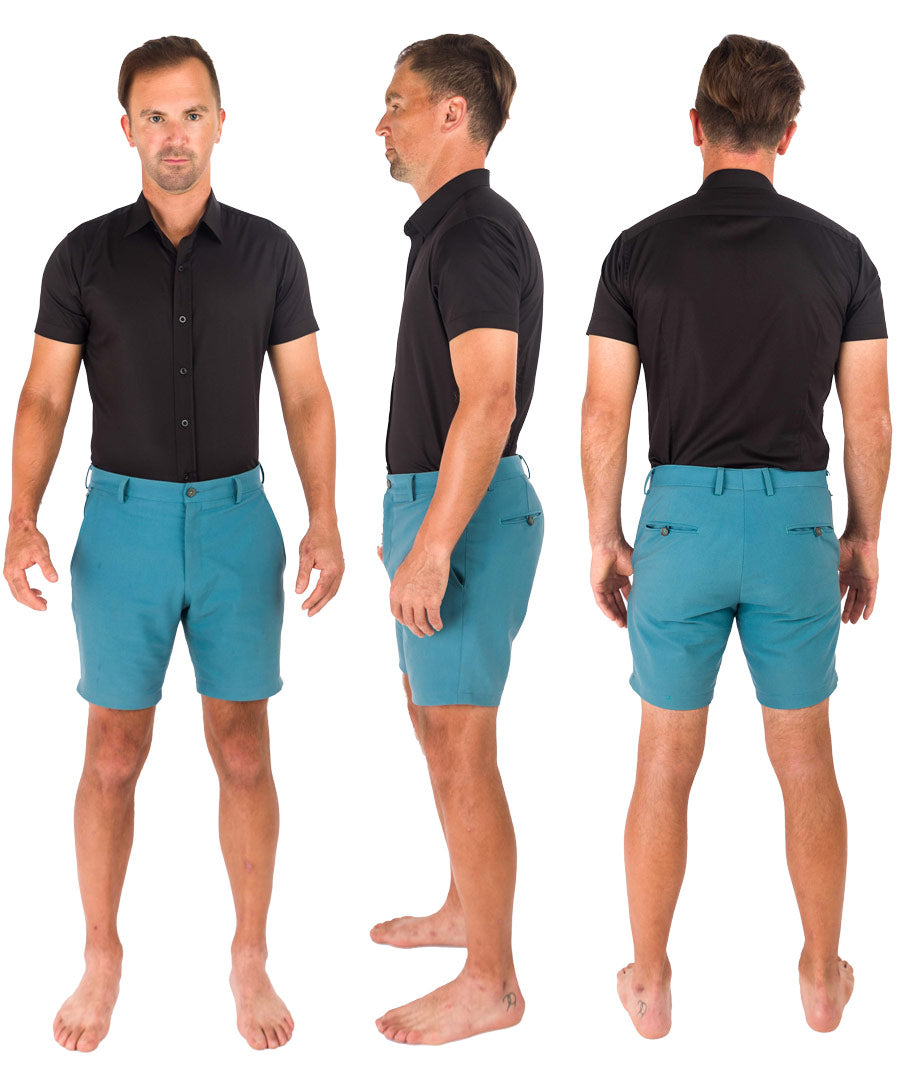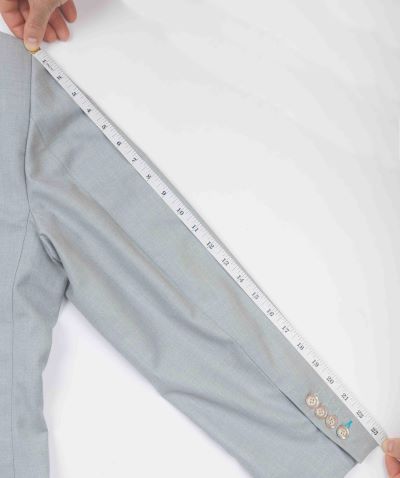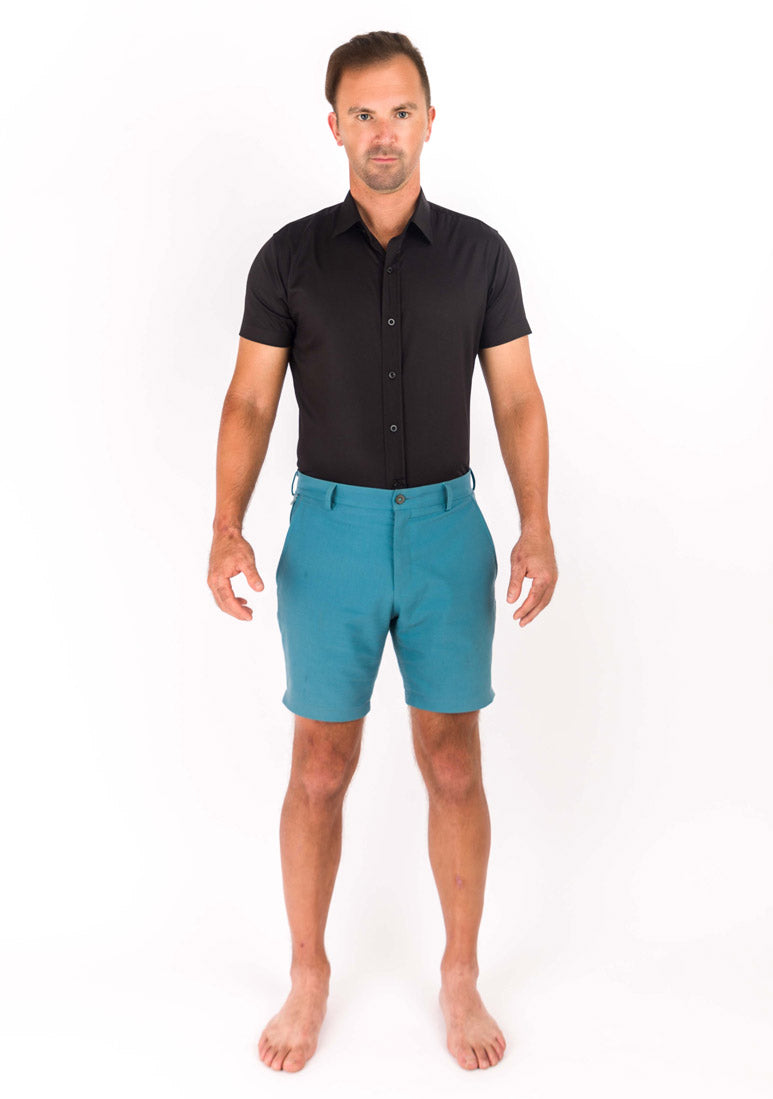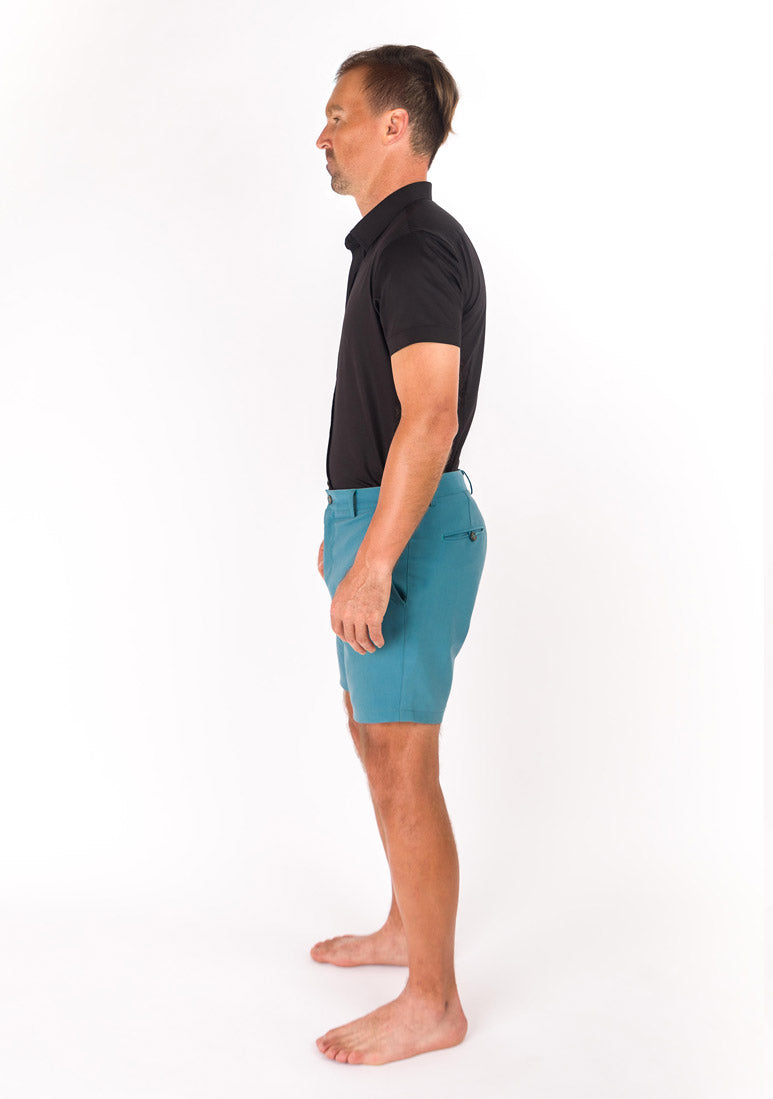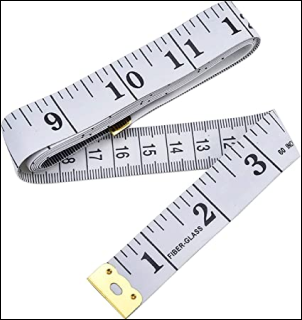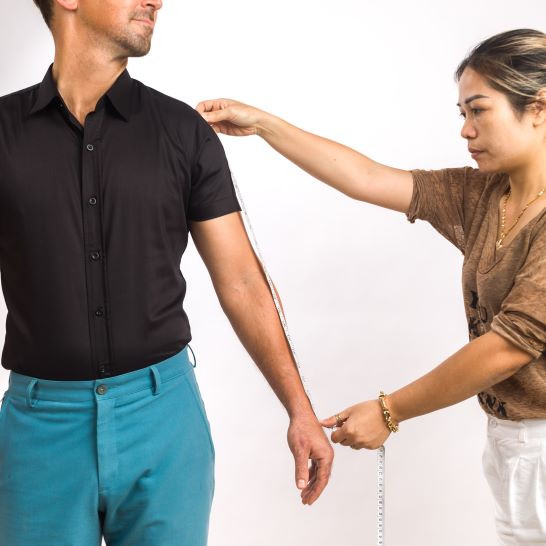How Should A Suit Jacket Fit

Key Takeaways:
- Shoulders are Key: The shoulder seam is paramount; it should align perfectly with your natural shoulder for a clean, structured look and unrestricted movement.
- Contour, Don't Constrict: Your jacket should gently taper at the waist and chest, allowing easy button closure without any pulling or "X" creases, ensuring both comfort and a sharp silhouette.
- Details Make the Difference: Pay attention to sleeve length (showing a hint of shirt cuff), jacket length (covering your seat), and a collar that lies flat against your neck—these subtle elements elevate your entire ensemble.
There’s nothing more telling than a suit jacket that doesn’t fit. Too tight in the shoulders, sleeves that swallow your hands, or a chest that pulls when you button up sends the wrong message. Fit isn’t just about comfort; it’s about presence. The right fit sharpens your look, boosts your confidence, and tells the room you know exactly what you’re doing.
At Sartoro, we believe your suit jacket should move with you, not against you. Whether you’re suiting up for work, weddings, or anything in between, getting the fit right isn’t optional—it’s essential. In this guide, we’ll break down exactly how a suit jacket should fit, piece by piece, so you can step out feeling sharp, not second-guessing.
Because when your jacket fits, so does everything else.
The Importance Of A Perfectly Fitting Suit Jacket
A suit jacket that fits flawlessly has unmistakable power. Beyond elevating your appearance, the right fit communicates confidence, commands respect, and celebrates individuality. A perfectly tailored jacket not only flatters your physique but also becomes an integral tool in expressing personal style—and in today’s world, style is a language all its own. For those seeking specific styles, consider a classic black suit jacket or a sophisticated blue suit jacket, both essential for any discerning men's suit jacket collection.
Comfort Meets Confidence
A suit jacket should move effortlessly with you, never restricting your motion or requiring constant adjustment. When the fit is dialed in—shoulders aligned, sleeves the correct length, chest and waist sculpted to your build—you’ll discover new confidence in your presence. Superior comfort means your focus stays on life’s bigger moments, not on tugging at your lapels.
Visual Harmony And Proportion
A luxury men's suit jacket is a masterclass in proportion. The lines of the shoulder, the length of the jacket, and the drape across your waist all work in concert to create a profile that is as intentional as it is elegant. Balanced proportions ensure the jacket complements you from every angle, emphasizing your strengths and refining your silhouette.
Unmatched Personal Expression
A perfectly fitting jacket isn’t just about measurements—it’s about you. Every decision amplifies your individuality, from the choice of lapel style to the selection of buttons and the subtle thread of personal details. Wearing a jacket that feels authentically yours tells your story before you even say a word.
How Should A Suit Jacket Fit In The Shoulders?
At the foundation of an exquisite suit jacket lies a detail that even the finest fabric or sharpest tailoring cannot compensate for: the fit in the shoulders. This area is the anchor for the entire garment, determining both silhouette and presence, as well as your comfort and confidence. When the shoulders fit flawlessly, the rest of the jacket naturally falls into perfect alignment, empowering you with a commanding and refined look.
Shoulder Seams: The Defining Line
The shoulder seam should lie precisely at the edge of your shoulder, where the arm meets the shoulder bone. If the seam extends past that point, the jacket will appear boxy and oversized, sacrificing sharpness for slouch. Too short, and the fabric will pull and bunch, creating unsightly wrinkles and restricting movement.
The Right Amount Of Structure
A suit jacket should follow the contour of your shoulders without excess bulk or exaggerated padding. Modern luxury tailoring embraces a natural shoulder line—subtle and sculpted rather than rigid. When trying on a jacket, check in the mirror: the sleeve should drape smoothly without a noticeable divot at the shoulder, and there should be no gap or collapse between your arm and the jacket's upper sleeve.
Mobility And Expression
Movement is a sign of true, personalized tailoring. When you cross your arms or extend them forward, the shoulder fabric should remain comfortably in place, without pulling tightly across your back. Impeccable shoulder fit gives you freedom to gesture and express yourself—whether you’re leading a boardroom, posing for wedding portraits, or commanding attention on a night out.
The Ideal Chest Fit: Clean Lines, No Pulling
A suit jacket’s chest fit sets the stage for the entire garment, defining both its silhouette and the luxury it conveys. When executed flawlessly, the chest should feel effortless, smooth and gently contoured, without restriction or excess. Striking this balance is crucial for a look that exudes confidence and individuality.
The Art Of Contouring
Elegance begins with the way fabric drapes over the chest. The ideal fit follows your natural shape, softly grazing without compressing. There should be no gaping at the lapels nor shadows around the armhole—a subtle, sculpted embrace that flatters every physique. The jacket should accommodate depth without ballooning for broader or more athletic builds. For leaner frames, stature must be enhanced with structure, not bulk.
Tension-Free Closure
Buttoning the jacket is the ultimate test. The fabric should close with ease, lying flat across your torso. Watch for the dreaded “X” shape—a telltale sign the jacket is straining across your chest. The right fit eliminates wrinkles and puckering, allowing luxury materials to showcase their full potential. Movement should feel unimpeded, with the jacket flexing as you reach, gesture, or embrace.
The Ultimate Test: Arms And Shoulders
Raise your arms, stretch, or hug. The chest must retain its clean lines, never pulling awkwardly as you move. If the jacket rises or hesitation creeps in when extending your reach, the fit needs refinement. A truly bespoke-inspired chest fit moves naturally with you, inviting confidence in every gesture.
How Long Should A Suit Jacket Be? A Simple Rule Of Thumb
The perfect jacket length complements your frame and elevates your entire silhouette, projecting both confidence and refined taste. Here’s how to ensure your jacket makes the correct statement.
The Classic Principle: Cover (Just) Your Seat
A timeless guideline: your suit jacket should cover your seat. Stand straight, arms relaxed. The bottom of the jacket should align with your knuckles or just meet the base of your hand. This traditional rule ensures a balanced ratio between your torso and legs, lending poise and elegance to any occasion.
Personalization For Modern Style
Contemporary styling opens the door to thoughtful customization. Some prefer a slightly shorter jacket for a modern, athletic look, especially those with a shorter torso or longer legs. Others may opt for added length, enhancing comfort and sophistication, particularly for taller or bigger frames. Assess your proportions and style goals, ensuring the jacket length emphasizes your best features rather than overwhelming them.
The Power Of Precision
Ultimately, the ideal suit jacket length marries classical aesthetics with your creative personality. Consider jacket length as a canvas—one detail that, when measured with intention, redefines what’s possible in fit and self-expression. When every inch is right, you don’t just wear a jacket; you command the room.
Sleeve Length: Where The Cuff Should Hit (And Why It Matters)
Perfect sleeve length doesn’t just communicate attention to detail—it flatters your physique, frames your shirt cuffs, and signals sophistication at a glance. Getting this seemingly subtle point right is essential for a look that radiates modern luxury and personal refinement.
The Ideal Stopping Point
The ideal jacket sleeve should end just at your wrist bone, allowing a quarter to half an inch of your shirt cuff to peek through. This visual alignment creates a crisp, intentional edge, framing your watch, cufflinks, or clean shirt cuffs with an elegant presence. The interplay between jacket and shirt emphasizes a bespoke approach, ensuring the entire ensemble looks thoughtfully constructed, not haphazardly thrown together.
Why Precision Matters
Getting the sleeve length right isn’t just about aesthetics but also confidence and comfort. Sleeves that fall too far over your hand can give an unkempt impression and restrict movement. On the other hand, sleeves riding too high break the visual line, making the jacket appear ill-fitted and out of balance with your frame. The perfect fit invites movement, handling meetings, celebrations, and every handshake with effortless grace.
Customization For Every Arm
Whether you’re naturally broad-shouldered, have longer limbs, or require a more compact fit, sleeve length can become a signature aspect of personal style. Custom tailoring empowers you to select not only the length but also the taper, the type of button cuff, and even contrast sleeves or linings for bold expression. Every detail—especially at the sleeve—becomes an extension of your creativity and attention to craftsmanship.
Waist Fit: Tapered, Not Tight
The artistry of tailoring truly asserts itself at the waist of your suit jacket. A sharply contoured waist signals sophistication and intention, but this contouring must distinguish between structure and restriction. Too often, men settle for jackets that bunch at the midsection or strain with every movement. Instead, seek a silhouette that gently tapers, accentuating your proper form while ensuring absolute freedom of movement.
The Silhouette: Commanding Yet Comfortable
The jacket should trace the natural curve of your torso, subtly drawing in at the waist without pinching or pulling across the buttons. Imagine fastening your jacket and seeing clean, unbroken lines from chest to hem—never an ‘X’ crease radiating from the closure. Sleek contours project confidence; a too-tight fit only undermines it, making even the finest fabrics look ill-considered.
Button Stance And Ease
A well-fitted waist allows you to button your jacket effortlessly. You should be able to slip a flat hand under the lapel without resistance, but not so much space that the fabric balloons outward. When standing, the jacket should remain close to the body, but when seated, comfort reigns—no straining, no pulling. This harmony between form and function is the essence of luxury suiting.
Flattering All Body Types
Regardless of your build—athletic, broad, or lean—a properly tapered waist flatters your proportions. Tailored to embrace your unique shape, a jacket’s waist should sculpt and define, never squeeze. The result is a garment that amplifies presence and assures you move through the world, and into any room, with authority and ease.
Jacket Collar Fit: No Gaps, No Roll
A flawlessly tailored jacket collar is the unsung hero of refined menswear. More than just a detail, the way your jacket collar fits can make or break the overall silhouette, instantly elevating or undermining your presence. Getting this aspect right sends a message: you care about excellence and demand nothing less than perfection from your wardrobe.
How The Collar Should Sit
The collar of your suit jacket should lay flat against your shirt collar, tracing its line across the nape of your neck with absolute precision. There should be no visible gap between the jacket collar and your shirt—this seamless alignment ensures a crisp, clean look that frames your face perfectly. The only thing visible from behind should be about half an inch of your shirt collar, providing a subtle contrast and sharp finish.
Avoiding Collar Roll And Gaps
Collar “roll”—where the jacket collar buckles or forms a ridge away from your neck—is a clear indicator of poor fit or posture alignment issues. Equally, gaps signal insufficient tailoring, disrupting the polished line of your outfit. A well-fitted jacket collar eliminates both problems, hugging the shirt and resting comfortably without tugging or pinching. This creates an uninterrupted, confident profile from every angle.
The Impact Of A Perfect Collar Fit
When your jacket collar is fitted with precision, everything else falls into place. The lapels lay smoother, the shoulders align better, and the jacket moves harmoniously with your body. The result? An aura of quiet luxury and self-assurance that commands respect before you even say a word.
Final Thoughts
When it comes to suiting up, nothing rivals the impact of a jacket that fits just right. Every detail matters from the shoulders to the waist—not just for comfort, but for the confidence, style, and message it sends. A well-fitted suit jacket is more than fabric and stitching; it’s a personal signature, a reflection of your attention to detail, and a quiet show of self-respect. At Sartoro, we understand that getting the fit right is everything. That’s why we’ve reimagined the tailoring process through innovation, giving you access to a custom look without setting foot in a store. Because when your jacket fits, the rest of your life does too.
Read also:
- Suit Jacket Or Blazer: The Difference
- Perfect Suit Jacket Fit Guide
- Understanding Different Suit Jacket Styles
Frequently Asked Questions About How A Suit Jacket Should Fit
Where should a suit jacket's hemline fall?
The hemline of a suit jacket should strike a refined balance, usually ending around the mid-point of your hand when your arms are relaxed at your sides. For most men, this means covering the seat of your pants, providing a proportional, tailored look.
Can a tailor make a suit jacket smaller if it's too loose?
Yes, a skilled tailor can bring in a jacket that’s too loose, refining the fit through the sides, back, and shoulders. However, significant downsizing is limited by seam allowances and the jacket’s original structure. Sartoro’s bespoke approach eliminates these concerns, delivering a garment that matches your exact physique and preferences the first time.
What does it mean when a suit jacket pulls at the button?
When a suit jacket pulls at the button, it signals that the jacket is too tight in the chest or waist, causing unsightly creases (often called "X-wrinkles") across the front. This undermines both comfort and elegance.
How should a suit jacket fit when sitting down?
A well-fitted suit jacket should remain comfortable and elegant even when seated. The fabric shouldn’t strain or bunch, and the lapels should lie smoothly when the jacket is either fastened or left open.
What is the significance of sleeve pitch in a suit jacket's fit?
Sleeve pitch refers to the angle at which a jacket’s sleeves are set relative to the shoulder—an often-overlooked but critical detail. Perfect sleeve pitch accounts for your natural posture, ensuring sleeves sit smoothly without twisting or creating creases.
How much shirt cuff should show below a suit jacket?
Elegance is in the details. Traditionally, about 1/4 to 1/2 inch of your shirt cuff should peek out beneath your suit jacket sleeve, providing a subtle frame showcasing craftsmanship and style.



















